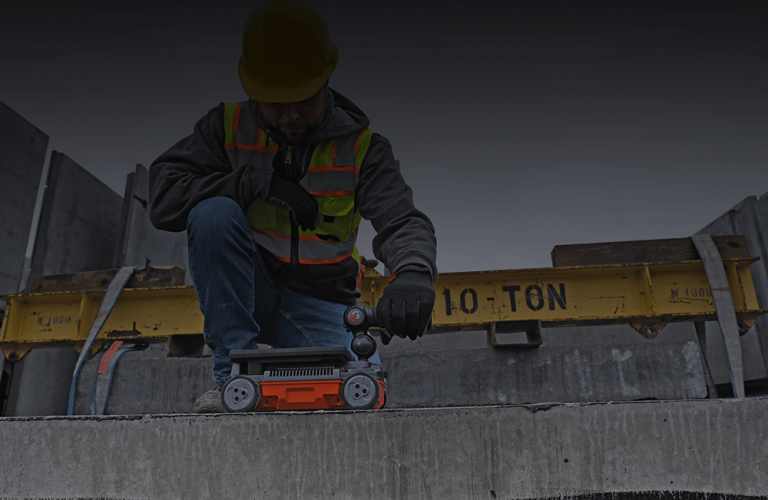Enhancing Project Planning and Implementation Via Advanced Concrete Scanning Strategies
In the world of task planning and insight, accuracy and execution are crucial aspects that can make the distinction in between success and setbacks. Advanced concrete scanning methods have actually arised as a sophisticated tool set to elevate the requirements of task administration within the construction industry.
Benefits of Advanced Concrete Scanning Techniques

Improved Precision in Job Assessments
Enhancing task analyses via advanced concrete scanning techniques considerably enhances the precision and integrity of building and construction evaluations. By using cutting-edge scanning technologies such as ground-penetrating radar (GPR) and 3D imaging, job teams can currently get comprehensive insights into the condition of concrete frameworks, identifying possible defects or weaknesses that may not be noticeable to the nude eye. This enhanced level of precision in job assessments makes it possible for building professionals to make even more enlightened choices concerning repair service and maintenance approaches, resulting in enhanced overall job end results.
Furthermore, the enhanced accuracy in project analyses accomplished with sophisticated concrete scanning strategies helps in decreasing the threat of unforeseen issues during the building phase. By proactively discovering surprise anomalies within concrete frameworks, such as rebar deterioration or gaps, task teams can attend to these concerns at an early stage, preventing expensive hold-ups and revamp later on in the task lifecycle. Inevitably, the enhanced accuracy in job evaluations promoted by advanced concrete scanning techniques adds to better effectiveness, cost-effectiveness, and quality in construction projects.
Early Identification of Architectural Obstacles
Very early detection of architectural challenges plays a vital function in making sure the integrity and safety of concrete frameworks throughout the building and construction procedure. Identifying prospective issues at a beginning enables prompt treatment, preventing expensive rework, schedule hold-ups, and safety and security hazards. Advanced concrete scanning techniques, such as ground-penetrating radar (GPR) and 3D imaging, enable project teams to uncover concealed flaws, spaces, reinforcement layout disparities, and various other anomalies that can jeopardize the structure's security.
By executing these methods throughout the preparation and implementation phases, building and construction experts can proactively resolve architectural challenges before they escalate right into significant problems. For example, spotting insufficient concrete cover over reinforcement bars early on can stop corrosion and architectural weakening in the lengthy run - RainierGPR Service Areas. Furthermore, identifying variations in concrete thickness or density can assist enhance product usage and make certain consistent stamina residential or commercial properties across the framework

Ultimately, very early identification of structural difficulties with sophisticated concrete scanning not only improves the total high quality and resilience of the construction but likewise adds to a more secure constructed setting for customers and occupants.
Improved Precaution in Building
The execution of robust safety and security procedures is critical in the building and construction market to alleviate dangers and protect the wellness of workers and stakeholders. Construction sites are inherently unsafe atmospheres, with prospective dangers ranging from falls and devices breakdowns to architectural failures. To improve precaution, building companies are increasingly adopting technological improvements such as wearable gadgets that check workers' crucial indicators and detect potential health concerns in real-time. Moreover, the usage of drones for website monitoring enables regular safety and security evaluations without putting workers in damage's means. Safety training programs have also developed to include virtual reality simulations that provide hands-on experience in dealing with emergency situation situations. In addition, the integration of fabricated knowledge in safety and security monitoring systems allows proactive recognition of prospective threats, allowing for timely interventions. By prioritizing safety with the consolidation of advanced modern technologies and thorough training programs, building and construction jobs can considerably lower accidents and develop a safe functioning environment for all involved - RainierGPR Service Areas.
Streamlining Job Administration Processes
To enhance operational effectiveness Continued and ensure project success in the construction market, a concentrate on streamlining job monitoring processes Continued is essential. By implementing reliable project administration procedures, construction projects can reduce delays, reduce costs, and improve overall efficiency. One key element of simplifying task administration is using sophisticated technologies such as Building Details Modeling (BIM) software program, which enables real-time partnership, clash detection, and precise project organizing. Additionally, the fostering of cloud-based project administration platforms enables seamless interaction amongst staff member, instantaneous accessibility to job data, and the capability to track progress in real-time.

Verdict
Finally, the application of sophisticated concrete scanning strategies provides many benefits for job preparation and execution. These methods provide better accuracy in project evaluations, early click to investigate identification of structural difficulties, boosted safety steps in construction, and streamlined job management processes. Incorporating these approaches into job workflows can eventually result in a lot more successful and efficient end results in building jobs.
Inevitably, the enhanced precision in job analyses helped with by sophisticated concrete scanning techniques contributes to better efficiency, cost-effectiveness, and top quality in building and construction jobs. RainierGPR Service Areas.
To optimize operational efficiency and make certain project success in the building and construction industry, a focus on streamlining project monitoring processes is essential. By executing effective task management processes, construction tasks can decrease delays, decrease costs, and boost overall productivity. By streamlining task administration procedures through innovation combination, clear communication, and data-driven methods, building jobs can accomplish greater effectiveness, cost-effectiveness, and successful end results.
These strategies offer improved precision in job assessments, early identification of structural challenges, boosted safety procedures in building, and streamlined project administration procedures.